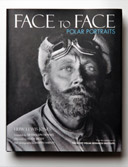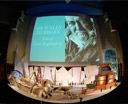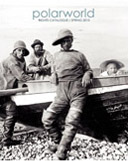 Our ProductsOur Resources |
This website requires the free Flash plugin to be installed.
Polarworld - discover more polar booksThe Arctic Book Review
Compiled and edited by John Bennett and Susan Rowley Reviewed by Lawrence Millman The Inuit once had a use for literally everything in their immediate environment. I've heard elders talk about using a decoction of dog urine to cure a persistent cough, the skins of mice as a cure for boils, and the deposits at the bottom of a kudliq lamp as a cure for vomiting. Likewise, I've seen Inuit scrape the intestine of a walrus until it's more or less translucent, and then use it as a window-pane in an iglu. For better or worse, White Man's material culture is now the material culture of choice for the Inuit. Thus if an Inuk develops a bad cough nowadays, he'll reach for the Robitussin rather than the dog urine. What survives is oral lore, albeit oral lore transmitted to books rather than to the indifferent sensibilities of younger Inuit. Uqalurait: An Oral History of Nunavut uses quotes from some three hundred elders to document Inuit traditional knowledge. Touching on everything from pregnancy taboos to starvation cuisine, from star lore to food sharing lore, and from skin preparation to sledge building, it is by far the most comprehensive compilation of Inuit oral lore ever put together. Indeed, there's scarcely an aspect of Inuit life that it doesn't seem to cover. Still, this isn't the definitive book that many of us had hoped for. The annotations provided by the editors are at best sketchy and at worst non-existent. Consider Simon Taipana's description of an event in the Coppermine region: a group of marauding Dene descend on an Inuit camp and kill all but one person. Could this be the "Bloody Falls Massacre" that Samuel Hearne made famous? The editors do not offer an answer. Nor do they say anything about the Tunit, who may or may not have been the Dorset People, although there's a whole chapter of Tunit stories in the book. Even worse, there's an entire region – Sanikiluaq (the Belcher Islands) – that's neither mentioned or shown on any of the book's maps. For a volume that purports to be all-inclusive, this is unforgivable, especially since that region's inhabitants, the Qikitarmiut, are among the most traditional in Nunavut. They believed in the powers of Nuliajuk, the so-called Woman of the Sea, long after other Inuit had given up on her. Several years ago, in fact, I talked to an old Sanikiluaq man who claimed to have accidentally shot and killed Nuliajuk. He was distraught, to put it mildly. These complaints notwithstanding, Uqalurait is a remarkably valuable book. It's also an elegy for a way of life that's been made irrelevant by satellite TV, Nintendo, and Google. |
|
||
follow us  | join us | join us  | home | contact | home | contact
|
||||
|
© Copyright Polarworld Ltd
SiteWizard.co.uk Web Site Design Company |
||||



 Uqalurait: An Oral History of Nunavut
Uqalurait: An Oral History of Nunavut